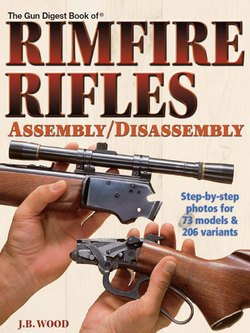Читать книгу The Gun Digest Book of Rimfire Rifles Assembly/Disassembly - J.B. Wood - Страница 8
На сайте Литреса книга снята с продажи.
ОглавлениеTOOLS
Countless firearms, old and new, bear the marks, burrs and gouges that are the result of using the wrong tools for taking them apart. In the interest of preventing this sort of thing, I am including here a group of tools that are the best types for the disassembly of rifles. Except for the few shop-made tools for special purposes, all of those shown here are available from one of these three sources.
| Brownells, Inc. | B-Square Company | Williams Gun Sight Company |
| 200 South Front Street | P.O. Box 11281 | 7389 Lapeer Road |
| Montezuma, IA 50171 | Fort Worth, TX 76109 | Davison, MI 48423 |
General Instructions:
Screwdrivers: Always be sure the blade of the screwdriver exactly fits the slot in the screw head, both in thickness and in width. If you don’t have one that fits, grind or file the top until it does. You may ruin a few screwdrivers but better them than the screws on a fine rifle.
Slave pins: There are several references in this book to slave pins, and some non-gunsmith readers may not be familiar with the term. A slave pin is simply a short length of rod stock (in some cases, a section of a nail will do) which is used to keep two parts, or a part and a spring, together during reassembly. The slave pin must be very slightly smaller in diameter than the hole in the part, so it will push out easily as the original pin is driven in to retain the part. When making the slave pin, its length should be slightly less than the width of the part in which it is being used, and the ends of the pin should be rounded or beveled.
Sights: Nearly all dovetail-mounted sights are drifted out toward the right, using a nylon, aluminum, or brass drift punch.
